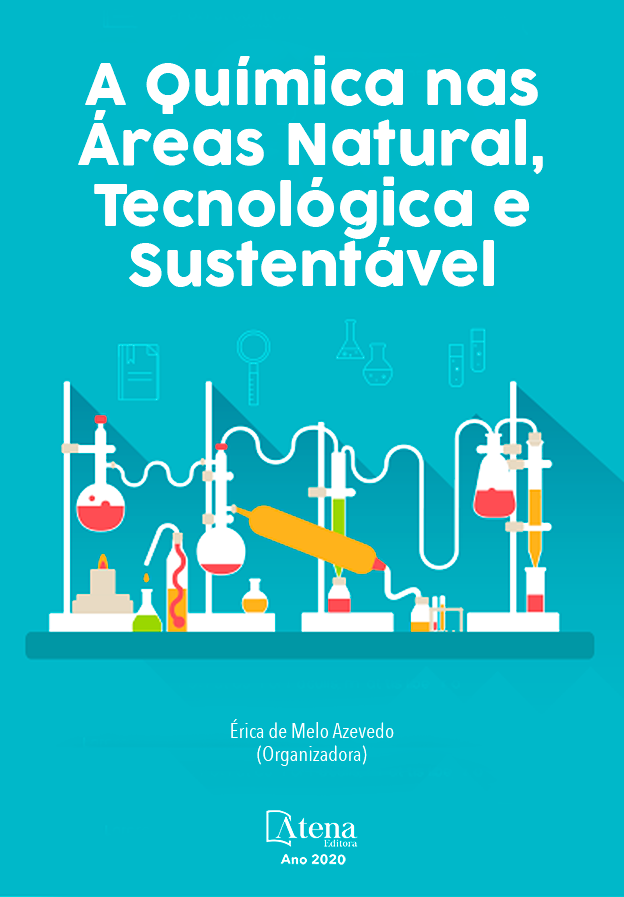
CARACTERIZAÇÃO DO HIDROGEL À BASE DE POLIACRILATO DE AMÔNIO E A SUA UTILIZAÇÃO NA ADUBAÇÃO POTÁSSICA DO TOMATEIRO
Vem crescendo investigações de formas alternativas para melhorar a produção de culturas agrícolas no mundo sem afetar diretamente o meio ambiente. Por outro lado, existem algumas indústrias do setor agrícola que vêm se preocupando menos com os impactos ambientais incentivando a aprovação de leis no Brasil visando a flexibilização do uso de insumos agrícolas tóxicos na agricultura. Uma forma de aperfeiçoar a produção seria com a utilização de polímeros superabsorventes, juntamente com um fertilizante necessário para a cultura, visando aumentar a quantidade de água disponível no solo e reduzindo o consumo de água potável para irrigação. Este estudo traz como proposta a utilização de um polímero superabsorvente a base de poliacrilato de amônio juntamente com uma fonte de potássio no plantio de tomateiro. A pesquisa com duração de 04 meses obteve dados pelas técnicas de análises de DSC e IR-ATR, bem como pela determinação do pH e do grau de intumescimento do hidrogel. Também foi realizada a determinação dos índices fisiológicos de crescimento da planta. Análise de IR-ATR mostrou bandas características de acrilatos com banda de estiramento de C=O em 1681cm-1 e banda larga de NH em 2900-3300 cm-1. A DSC apresentou pico endotérmico de Tm entre 208 ºC - 213.42ºC e possível Tg em 262,38 ºC. O pH obtido foi de 5,83 para o hidrogel,e 5,80 para o solo. O grau de intumescimento atingiu até 13479% e o teor de água 99,2%. Apesar do curto período para avaliação do crescimento do tomateiro, os índices da variação no desenvolvimento e crescimento das mudas de tomateiro com a presença de Hidrogel e de KCl, evidenciaram a eficácia. O hidrogel também se mostrou eficiente na liberação de água, deixando a terra por mais tempo umedecida, permitindo a diminuição na frequência de irrigação.
CARACTERIZAÇÃO DO HIDROGEL À BASE DE POLIACRILATO DE AMÔNIO E A SUA UTILIZAÇÃO NA ADUBAÇÃO POTÁSSICA DO TOMATEIRO
-
DOI: 10.22533/at.ed.8592017097
-
Palavras-chave: Hidrogéis; Tomateiro, Poliacrilatos, Insumo agrícola
-
Keywords: Hydrogels; Tomato, Polyacrylates, Agricultural supplies
-
Abstract:
Investigations of alternative ways to improve the production of agricultural crops in the world without directly affecting the environment have grown. On the other hand, there are some industries in the agricultural sector that have been less concerned with environmental impacts, encouraging the approval of laws in Brazil aiming at easing the use of toxic agricultural supplies in agriculture. One way to improve production would be with the use of superabsorbent polymers, together with a fertilizer necessary for the crop, aiming at increasing the amount of water available in the soil and reducing the amount of drinking water for irrigation. This study proposes the use of a superabsorbent polymer known as ammonium polyacrylate together with a potassium source in tomato planting. The 3-month survey presented data obtained by DSC and IR-ATR analysis techniques, as well as by determining the pH and the degree of swelling of the hydrogel. The physiological growth index of the plant was also determined. IR-ATR analysis showed characteristic bands of acrylates with C = O stretch band at 1681cm-1 and NH broadband at 2900-3300 cm-1. DSC analysis showed an endothermic peak of Tm between 208 °C - 213.42 °C and possible Tg at 262.38 °C. The pH obtained was 5.83, and the degree of swelling reached up to 13479% and the water content was 99.2%. Despite the short period for assessing tomato growth, the rates of variation in the development and growth of tomato seedlings with the presence of Hydrogel and KCl showed the effectiveness. The hydrogel was also shown to be efficient in releasing water, leaving the soil moist for a longer time, allowing a decrease in the frequency of irrigation.
-
Número de páginas: 15
- Raíssa dos Santos Conceição
- Ana Lúcia Bertarello Zeni
- Ivonete Oliveira Barcellos


